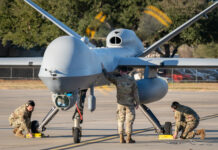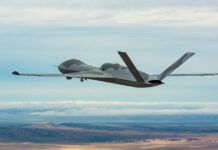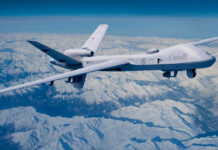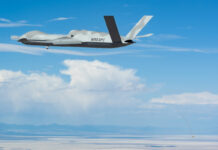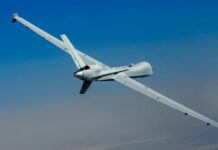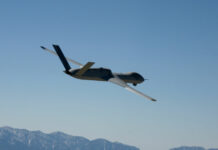The overall life cycle cost of UAVs are minuscular compared to traditional air platforms aircraft and the lack of onboard crew reduces the fatality in a combat environment. In 4D scenarios, UAVs can also be used to collect massive volumes of data (Dull, Deep, Dirty and Dangerous). They have previously proven their impressive capabilities in Intelligence, Surveillance, Target Acquisition, and Reconnaissance (ISTAR) and armed ISTAR missions. UAVs also give quick air support to ground forces and they have a favourable impact on both mission planning (commanders receive more information) and military operations (as UAVs provide immediate air support to ground forces).
UAV Classes
There are three UAV classes (less than 150 kg, 150 kg to 600 kg, and 600 kg and up) and the end users select the UAV platform based on their operational needs and budget. However, weight and size tend to affect technical features such as maximum service ceiling and range, as well as the payloads that may be carried. As a result, each class typically offers three types of user support: operational, tactical, and strategic. Medium Altitude, Long Endurance (MALE) vehicles are more powerful and cost-effective than manned aircraft. In light of this, the armed forces of most the countries are expanding the use of these weapons for both armed and unarmed missions.
The US is a mature market in this segment. However, the EU is comparatively lagging behind in terms of indigenous programmes. The EURODRONE is the first UAV to be built for non-segregated airspace flying. The EURODRONE will promote European sovereignty by building and expanding an independent technological foundation in the field of unmanned aviation, as a four-nation project. Under the management of the international armaments agency OCCAR, the programme between Germany, France, Spain, and Italy promotes European security and defence cooperation and confirms the initiative to increasingly rely on multinational armament projects. OCCAR has signed a contract worth US$8Bn with Airbus Defence and Space for developing and building 60 drones. Similarly, other countries across the World are investing in indigenous technology to reduce dependency in foreign OEMs.

According to recent estimates by Aviation and Defence Market Reports, the Global High-Altitude, Long-Endurance (HALE) and Medium Altitude, Long-Endurance (MALE) UAV market is estimated at around US$3.5Bn in 2022 and is expecting US$8.61Bn in 2032. The market will be driven by cross-border tension between nations and increasing demand for cost-effective defence systems that are capable of acting as a credible deterrent in conventional warfare. The key programmes and procurement across the top 10 defence spenders are discussed below.
Poland
Poland is planning to purchase MALE MQ-9 REAPER drones due to its concerns on the Eastern border. The acquisition is expected to be completed as an urgent operational requirement. Procurement of MALE UAVs is being pursued both within the context of the ZEFIR programme, which would satisfy future needs for the growth of Armed Forces capabilities, and within the framework of the urgent acquisition of MQ-9 REAPER UAVs – in light of the situation on Poland’s eastern border. The initial plan was to procure four sets of three UAVs for the Zefir programme. The MQ-9 REAPER is a MALE unmanned aerial vehicle (UAV) that is used to carry out reconnaissance and combat missions. The REAPER is powered by a Honeywell TPE331-10 turboprop engine, which gives it a flight endurance of up to 27 hours, albeit this is halved when the UAV is fully armed. The base model has a range of around 1,800 kilometres.
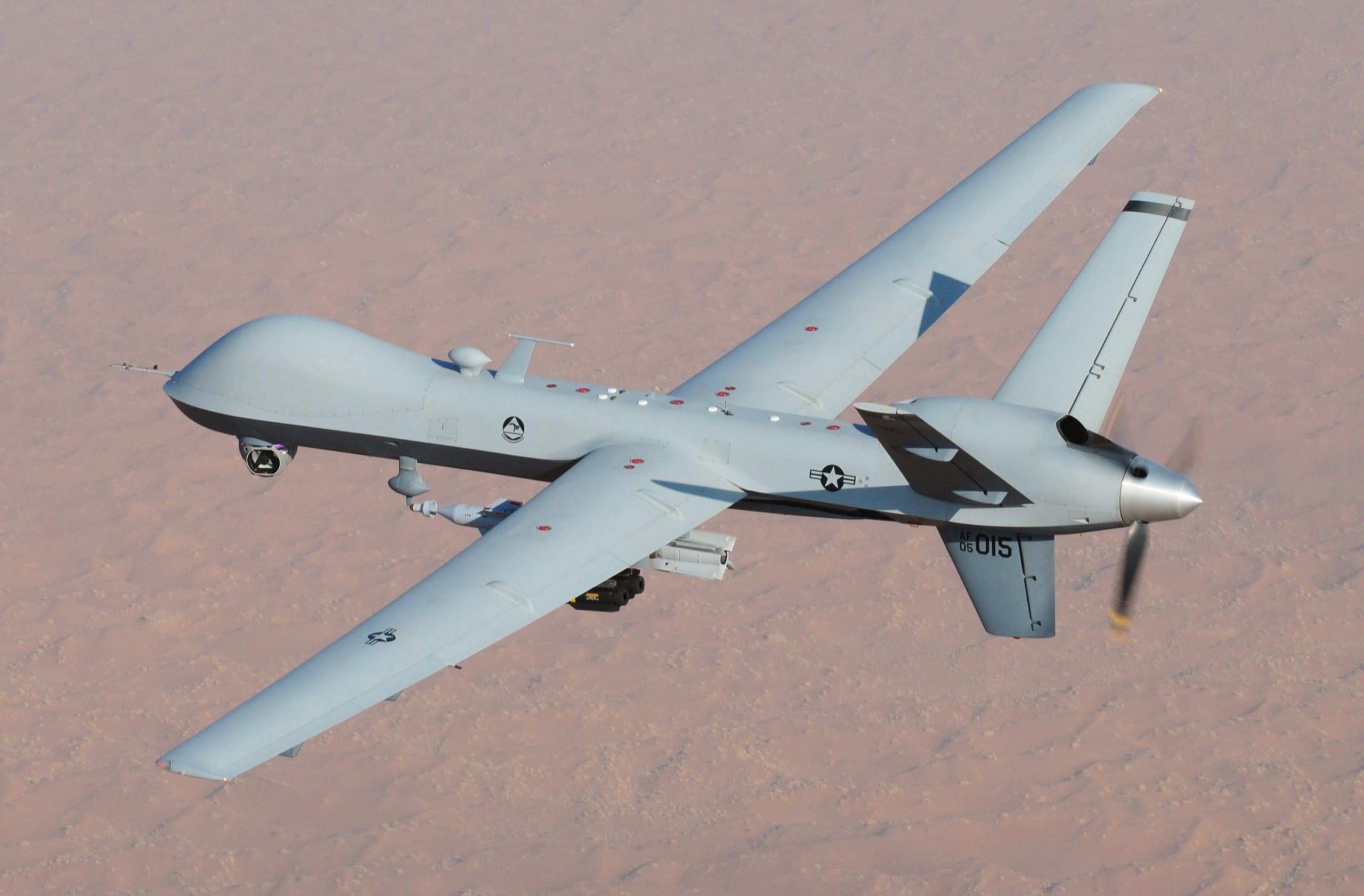
India
India’s RUSTOM – 2 MALE is expected to reach 30,000 feet and have an endurance of 18 hours. The military considers UAVs to be a top priority, particularly given the standoff with China in Eastern Ladakh. The military forces heavily rely on Israeli SEARCHER and HERON drones and require more of these UAVs. A total of 76 RUSTOM – 2 drones are expected to be bought by the Indian armed forces, with 60 by the Army, 12 by IAF and four by the Navy. The Indian Navy is also planning to induct 10 MQ-9B SeaGuardian, these drones have an endurance of 33 hours and can fly at more than 40,000 feet. The Indian Navy has leased two SeaGuardian drones to test the capabilities and its operational parameters. It is also expected that India would procure 30 SeaGuardian/SkyGuardian systems.
Germany
The German Bundeswehr plans to lease up to five Israeli-made HERON TP MALE UAVs, which will be equipped with air-to-ground precision guided bombs. The primary mission of the HERON TP will be Intelligence, Surveillance and Reconnaissance (ISR). Although this is a significant signal from the new German administration to its allies and partners, the operational relevance of the armed HERON TP would add capability. Despite a renewed focus on NATO’s eastern flank, the HERON TP will be limited in its operational utility in any high-intensity fight with a peer enemy like Russia, and will most likely be relegated to low-intensity missions. The Bundeswehr operates a variety of ISR UAVs, including three more HERON 1 MALE UAVs leased from Israel. They have been used in Afghanistan and Mali, but yet to prove their full operationally capability in a high-intensity combat.
France
France is expected to purchase an extra MQ-9 REAPER Block 5 UAVthrough the Foreign Military Sales (FMS) channel from the United States. The work of General Atomic Aeronautical Systems Inc (GA-ASI) is expected to be completed by 29 March 29 2024. Six REAPER Block 1 and six REAPER Block 5 UAVs are currently deployed in France. It wants to add six more Block 5 models to its stockpile, with the latter being equipped with precision-guided bombs GBU-12 PAVEWAY and air-to-surface missiles AGM-114 HELLFIRE. These systems will also have an FMS pod for gathering electronic intelligence. The purchase of REAPER MALE surveillance drones was originally meant to serve as a stopgap measure while France worked with the United Kingdom to build a new-generation MALE UAV system that would be introduced between 2020 and 2025. However, the project stalled and was eventually abandoned in February 2019.
UK
For surveillance missions, the HALE concept allows for flight altitudes of over 65,000 feet and endurance which is considerably above the 30-hour endurance limit. The term ‘Zephyr’ refers to a family of solar-electric-powered unmanned air vehicles (UAVs) being developed by the British multinational defence technology company QinetiQ and the UK Ministry of Defence as part of a jointly sponsored initiative. In 2013, Airbus Defence and Space (then known as EADS Astrium) purchased the development programme. This autonomous unmanned HALE system can collect high-quality surveillance data over large areas in real time. The UAV weighs less than 75kg and has a wingspan of up to 25 meters, thanks to its ultra-lightweight carbon-fibre construction. The device is capable of capturing and disseminating data at altitudes of up to 18 kilometres. It also has a solar charger and a custom auto-pilot system designed entirely by QinetiQ.
US
The RQ-180 is a twin-engine flying wing aircraft with slim laminar-flow optimised wings. Highly advanced, broadband, all-aspect, very low-observable (stealth) requirements drive its overall design. It is designed to fly for lengthy periods of time at very high altitudes in contested airspace, at or over 70,000 feet.
In the High Altitude/ Long Endurance UAV industry, Northrop Grumman’s RQ-4 GLOBAL HAWK UAV has developed a strong position. An example of the superior performance of RQ-4 can be understood from Operation Iraqi Freedom. The system flew five per cent of the US Air Force’s high-altitude reconnaissance flights during Operation Iraqi Freedom (OIF), but it generated more than 55 per cent of the time-sensitive targeting images used to assist attack missions. The RQ-4 GLOBAL HAWK was also a strong competitor and ultimate winner in the Broad Area Maritime Surveillance (BAMS) UAV competition. The GLOBAL HAWK Maritime Demonstration Programme (GHM-D or BAMS-D) aims to use the well-proven RQ-4 GLOBAL HAWK airframe as a test bed for operational concepts and technologies that will eventually make their way into BAMS, as well as contribute valuable knowledge to the new field of maritime surveillance with high-flying UAVs. The US Defence budget had allocated around US$2Bn annually for procurement of new UAV platforms in the past three years and this trend is expected to continue.

South Korea
There is a MALE locally developed Korean Unmanned System (KUS)-FS unmanned aerial vehicle (UAV) and it has been successfully deployed. The KUS-FS first flew in 2012 and was created by Korean Air Aerospace Division (KAL-ASD) for the Korean Agency for Defence Development (ADD). With an endurance of up to 24 hours, the locally produced KUS-FS is intended for armed land and marine ISR missions. Similar to the US-made General Atomics MQ-9 REAPER UAV, KUF-FS has a V-tail and a vertical ventral fin. It is said to have a wingspan 25 meters wider than the REAPER and a 1200 horsepower Pratt & Whitney PT6 turboprop engine. Additionally, it has four underwing weapon stations, one of which is equipped with a trial munition. A chin-mounted EO/IR turret, a belly-mounted maritime radar with 360-degree capability for detecting targets at sea, and electronic support measures (under the fuselage, behind the wings) for identifying and locating signals from maritime vessels are among the onboard sensors. The KUS-main FS’s landing gear retracts into the wings rather than the fuselage, in contrast to the REAPER. South Korea also operate the US delivered RQ-4B GLOBAL HAWK HALE and is also working on an indigenous HALE programme which has a flying wing design and it is likely to be deployed by 2031.
Russia
At the MAKS 2017 Trade Expo, Russia debuted its first MALE UAV system. However, the privately owned Kronshtadt (KT) Group, which showcased the ORION, claims that the UAV has flown on multiple occasions and is prepared for production. It has been created by KT as a result of a 2011 contract with the Russian MoD. Only a few details regarding the ORION were made public by KT, including its payload capacity of 200 kg (440 pounds), top altitude of 7,500 meters (24,750 feet), operational radius of 250 km (135 km), and maximum endurance of 24 hours. Russia is also working on an indigenous HALE programme named ALTIUS. The ALTIUS is a HALE drone that can fly 39,000 feet high for up to 48 hours while surveying the ground with its electro-optical turret and side-looking radar. However, unlike the RQ-4, it can carry weaponry ranging from small guided bombs to 75-mile-range GROM missiles. Two drones connected with satellite communications for long-distance control make up an ALTIUS UAS, which can also operate autonomously for long-endurance operations.
China
The TB-001 combat drone is 10 meters long, with a wing length of 20 meters, a height of 3.3 meters, a maximum range of 6000 kilometres, and a flying altitude of 8000 meters, with a maximum load capacity of 1.2 ton, three times that of China’s famed RAINBOW 4B UAV. It also has a battle radius of 3000 kilometres, allowing it to annihilate an enemy from a distance of 3000 kilometres. The performance is highly advanced. The UAV has an endurance of 35 hours. The “double-tailed scorpion” is a nickname for this drone because it has two tail support pieces that extend below the wing and are each connected to a vertical tail. To generate a similar force structure, the top of the vertical tail can be combined with a flat tail. This design strategy can make the fuselage stronger and lighter, allowing it to fulfil functions at a higher altitude. It can transport a number of missiles, including the 20-kilogram AR-2 missile, which can be steered in a variety of ways. This missile can be carried on a four-mounted pylon and can destroy ground targets. This permits the same hanging point that formerly held one AR-2 missile to now hold four, thereby improving firepower continuity and making it easier to transport. It can also carry four long-range missiles that can be launched from a height of 7000 meters to kill a thousand-ton destroyer.

Japan
The RQ-4B GLOBAL HAWK surveillance drone has been acquired by Japan, however it has generally avoided combat drones. In its fiscal 2022 budget, it set aside only JPY30M (US$231,000) for gadget research. Beginning in fiscal year 2023, Japan’s Defence Ministry is considering incorporating attack drones into its plans. On 30 March 2022 Japan announced that it will create military-grade UAVs.
Saudi Arabia
Saudi Arabia currently operates MALE UAVs procured from China. The CH-4B RAINBOW is manufactured by China Aerospace Science and Technology Corporation (CASC). It has an endurance of 40 hours. It can carry a wide range of sensors such as infra-Red (IR) and Electro-Optical (EO) cameras, and laser designator in sensor ball and payloads such as AKD-10 air-to-surface anti-tank missile, BRMI-90 90mm guided rocket, FT-7/130 130kg glide bombs, FT-9/50 50kg bomb, FT-10/25 25kg bomb, GB-7/50 50kg precision-guided munition (PGM), and GB-4/100 PGM. Saudi Arabia also operates the Wing Loong II MALE UAV manufactured by Chengdu Aircraft Industry Group (CAIG). It has an endurance of 32 hours. Payload and sensors are similar to CH-4B rainbow.
With successful deployment of drones by both Russia and Ukraine in the ongoing conflict, there has been growing interest for MALE UAVs that can carry out ISR and Strike missions. The relatively low cost of operation and operational versatility when compared to manned aircrafts make them feasible for future development and frontline deployment. HALE UAVs will continue to be predominantly used for ISR missions to collect critical data with advanced sensors.
Mandip Singh




